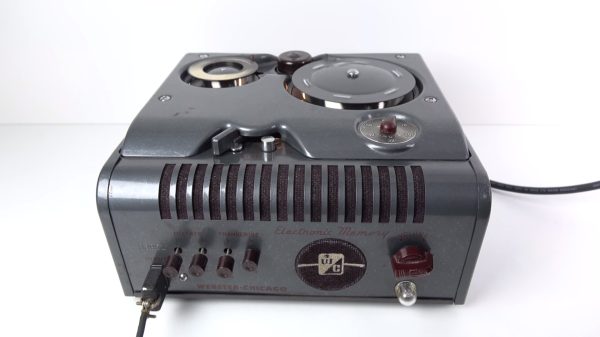If you think of old recording technology, you probably think of magnetic tape, either in some kind of cassette or, maybe, on reels. But there’s an even older technology that recorded voice on hair-thin stainless steel wire and [Mr. Carlson] happened upon a recorded reel of wire. Can he extract the audio from it? Of course! You can see and hear the results in the video below.
It didn’t hurt that he had several junk wire recorders handy, although he thought none were working. It was still a good place to start since the heads and the feed are unusual to wire recorders. Since the recorder needed a little work, we also got a nice teardown of that old device. The machine was missing belts, but some rubber bands filled in for a short-term fix.
The tape head has to move to keep the wire spooled properly, and even with no audio, it is fun to watch the mechanism spin both reels and move up and down. But after probing the internal pieces, it turns out there actually was some audio, it just wasn’t making it to the speakers.
The audio was noisy and not the best reproduction, but not bad for a broken recorder that is probably at least 80 years old. We hope he takes the time to fully fix the old beast later, but for now, he did manage to hear what was “on the wire,” even though that has a totally different meaning than it usually does.
It is difficult to recover wire recordings, just as it will be difficult to read modern media one day. If you want to dive deep into the technology, we can help with that, too.



 [Nick]’s grandfather was quite the old school hacker. In the 1940s, he built his own wire recorder and microphone to capture everything from his children’s Chirstmas wishes to his favorite songs and programs from the radio. Only 20 or so spools have survived and were doomed to silence until [Nick] was able to
[Nick]’s grandfather was quite the old school hacker. In the 1940s, he built his own wire recorder and microphone to capture everything from his children’s Chirstmas wishes to his favorite songs and programs from the radio. Only 20 or so spools have survived and were doomed to silence until [Nick] was able to 








